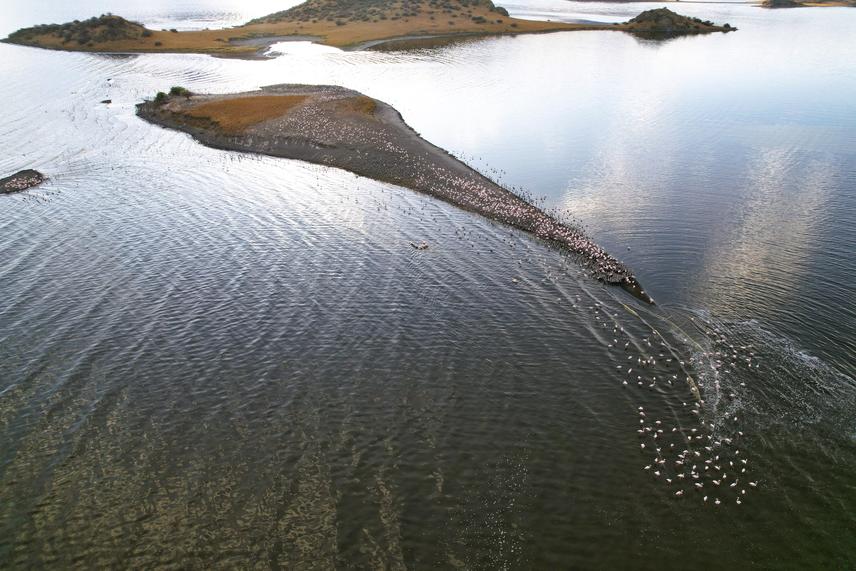Akshita Rabdiya
The Lesser Flamingos are a unique, nomadic bird species that depend on the alkaline-saline lakes of East Africa’s Rift Valley, with Lake Natron in Tanzania serving as the only regular breeding site. However, despite Lake Natron’s crucial role, data on the Lesser Flamingo population size and movement patterns in this area remain limited. Environmental pressures, such as fluctuating water levels and habitat degradation, pose significant threats to these critical lake ecosystems, potentially impacting flamingo populations and biodiversity across the Rift Valley. Studies by Byrne et al. (2024) and the Tanzania National Single Species Action Plan (2010) highlight the urgency of local and cross-border conservation efforts to address these risks.

Aerial view of Greater Flamingos breeding on one of the islands of Lake Natron. © Akshita Rabdiya.
This project aims to establish a comprehensive, year-round monitoring programme focused on the Lesser Flamingo population at Lake Natron. The primary objectives are twofold: to better understand the species' movement patterns across the network of soda lakes and to assess the impacts of environmental changes on their distribution and abundance. The highly nomadic nature of the Lesser Flamingo means that, outside of breeding periods, they rely on various Rift Valley lakes for food and habitat. Current tracking data, gathered mainly at Lake Bogoria in Kenya, show that flamingos move between lakes, including Lake Natron, Lake Logipi in Kenya, and Lake Bahi in central Tanzania (Childress et al., 2004; Salewski et al., 2009).
Our project intends to build on these insights by tracking flamingos at Lake Natron itself, using GPS-GSM tagging techniques to collect robust data on flamingo movements and lake-to-lake interactions. These data will provide a clearer understanding of how Lesser Flamingos respond to changing food availability and water levels, contributing valuable information for their conservation management. By strengthening monitoring efforts, this project aligns with regional conservation strategies to safeguard the Lesser Flamingo population, ensuring a sustainable future for this iconic species and the fragile lake habitats they inhabit.
Header image: A group of Lesser Flamingos at Lake Natron. © Akshita Rabdiya.